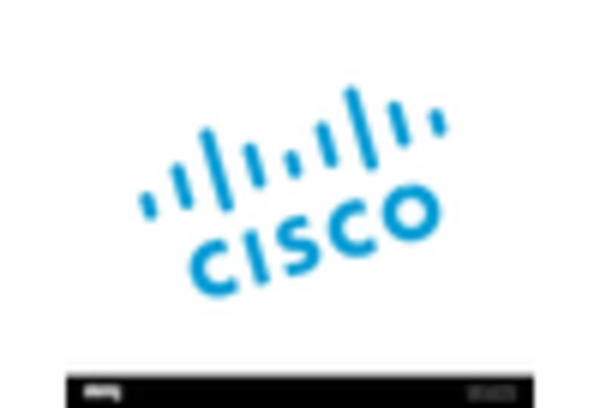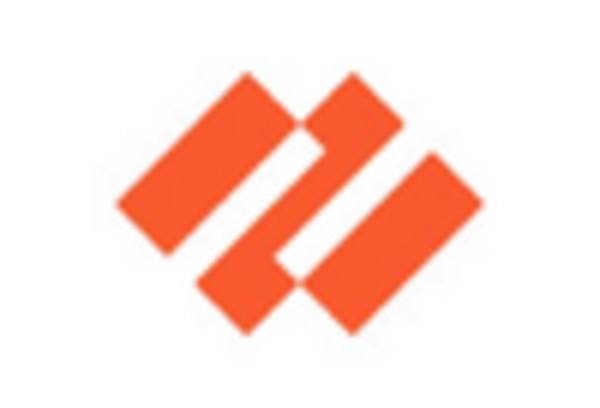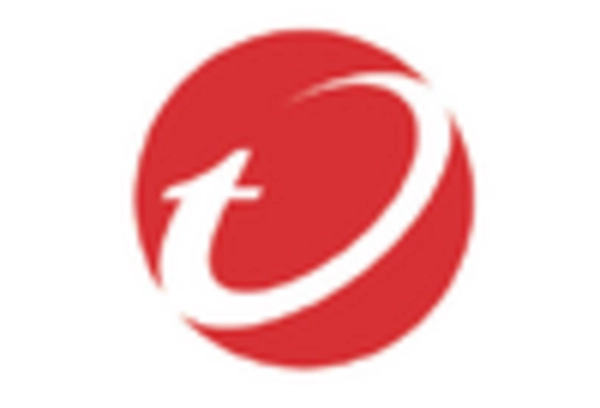Rising Cyber Threats
The increasing frequency and sophistication of cyber threats is a primary driver for the multi layer-security market. Organizations across various sectors are facing a surge in cyberattacks, including ransomware, phishing, and advanced persistent threats. According to recent data, cybercrime is projected to cost the global economy over $10 trillion annually by 2025. This alarming trend compels businesses to adopt multi layer-security solutions to safeguard sensitive data and maintain operational integrity. The multi layer-security market is witnessing heightened demand as companies seek to implement comprehensive security frameworks that encompass multiple protective measures. As a result, investments in advanced security technologies are expected to rise significantly, with the market projected to grow at a CAGR of approximately 12% over the next five years.
Shift Towards Remote Work
The transition to remote work has fundamentally altered the security landscape, driving demand for multi layer-security solutions. As organizations adapt to flexible work arrangements, the need for secure access to corporate resources has become paramount. The multi layer-security market is witnessing a surge in demand for solutions that facilitate secure remote access, including virtual private networks (VPNs) and multi-factor authentication (MFA). This shift is expected to continue, with remote work becoming a permanent fixture for many companies. Consequently, the market is projected to grow as businesses invest in multi layer-security technologies to ensure that remote employees can operate securely without compromising sensitive information.
Increased Regulatory Pressures
The multi layer-security market is significantly influenced by the growing regulatory landscape in the United States. Organizations are now required to comply with various regulations, such as the Health Insurance Portability and Accountability Act (HIPAA) and the General Data Protection Regulation (GDPR). These regulations mandate stringent data protection measures, compelling businesses to invest in multi layer-security solutions to avoid hefty fines and reputational damage. The multi layer-security market is adapting to these regulatory pressures by offering solutions that ensure compliance while enhancing overall security posture. As companies strive to meet these requirements, the demand for multi layer-security technologies is expected to escalate, with an estimated market value reaching $30 billion by 2026.
Growing Adoption of IoT Devices
The proliferation of Internet of Things (IoT) devices is reshaping the multi layer-security market landscape. As more devices become interconnected, the attack surface for cyber threats expands, necessitating robust security measures. The multi layer-security market is responding to this challenge by developing solutions that specifically address the vulnerabilities associated with IoT ecosystems. With an estimated 75 billion IoT devices expected to be in use by 2025, organizations are increasingly recognizing the need for multi layer-security frameworks that can protect these devices from potential breaches. This trend is likely to drive significant growth in the market, as businesses seek to implement comprehensive security strategies that encompass both traditional IT and IoT environments.
Technological Advancements in Security Solutions
Technological innovation is a key driver of growth in the multi layer-security market. The emergence of advanced technologies, such as artificial intelligence (AI) and machine learning (ML), is transforming the way security solutions are developed and deployed. These technologies enable organizations to proactively identify and mitigate threats, enhancing the overall effectiveness of multi layer-security frameworks. The multi layer-security market is experiencing a shift towards solutions that leverage AI and ML for real-time threat detection and response. As organizations increasingly recognize the value of these technologies, investments in multi layer-security solutions are expected to rise, potentially leading to a market valuation exceeding $40 billion by 2027.
















Leave a Comment